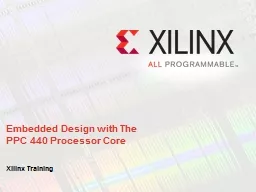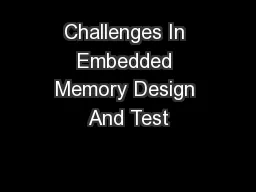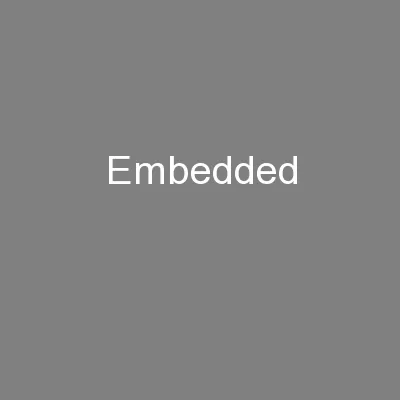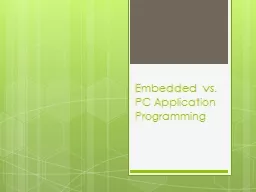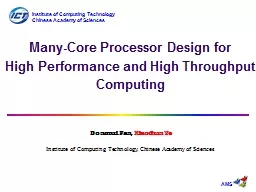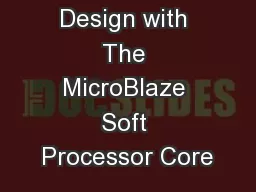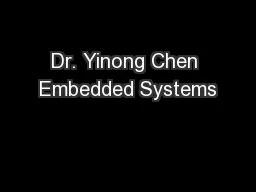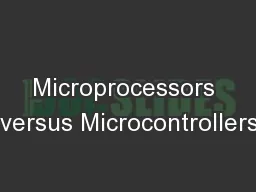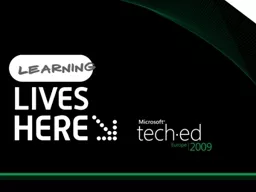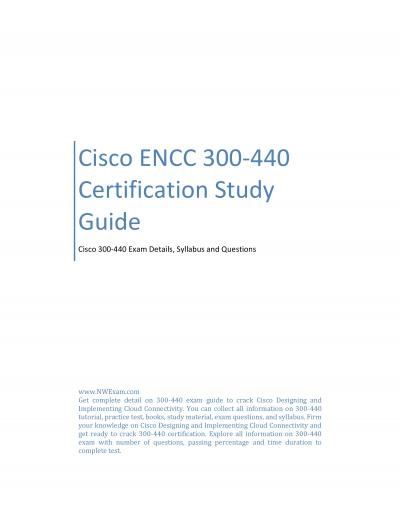PPT-Embedded Design with The PPC 440 Processor Core
Author : danika-pritchard | Published Date : 2017-12-14
Xilinx Training Welcome If you are new to Embedded design with Xilinx FPGAs this module will explain why you may want to use the PPC 440 processor in the Virtex5
Presentation Embed Code
Download Presentation
Download Presentation The PPT/PDF document "Embedded Design with The PPC 440 Process..." is the property of its rightful owner. Permission is granted to download and print the materials on this website for personal, non-commercial use only, and to display it on your personal computer provided you do not modify the materials and that you retain all copyright notices contained in the materials. By downloading content from our website, you accept the terms of this agreement.
Embedded Design with The PPC 440 Processor Core: Transcript
Download Rules Of Document
"Embedded Design with The PPC 440 Processor Core"The content belongs to its owner. You may download and print it for personal use, without modification, and keep all copyright notices. By downloading, you agree to these terms.
Related Documents

